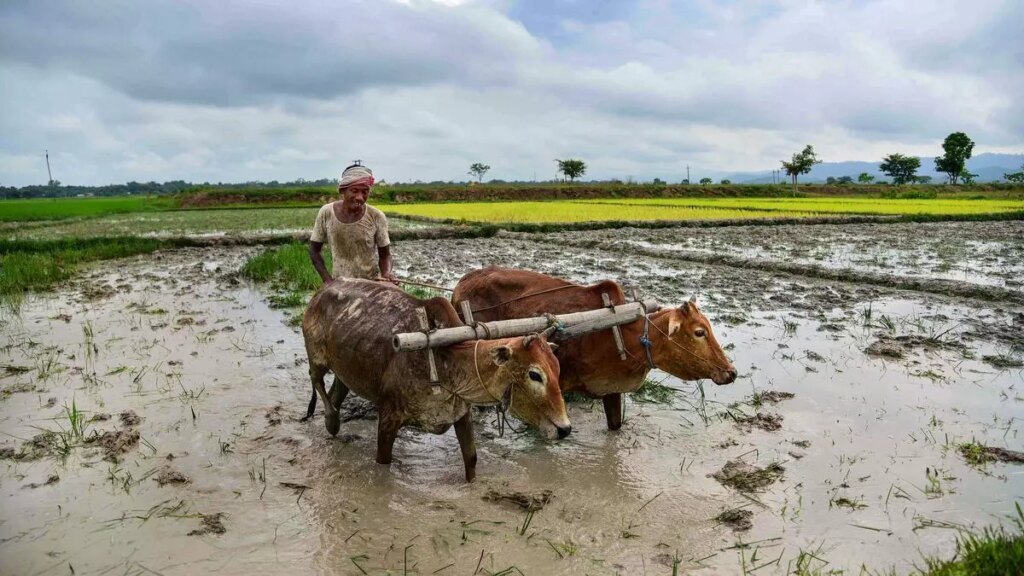[ad_1]
While the overarching target of ‘Viksit Bharat’ is to reach a $35 trillion economy by 2047, a unique aspect of the initiative is the identification and nurturing of new growth drivers, whether in sectors or States.
In this context, the budget’s special emphasis on eastern States marks a crucial policy shift. Historically overlooked and isolated from the nation’s developmental paradigm, the eastern region has suffered from deficiencies in infrastructure, economic advancement, and skilling.
The recent budget’s emphasis on eastern India is a pivotal and justified move, rooted in the principles of equity and equality. By redirecting financial resources, the government aims to ensure that eastern States receive their fair share, addressing historical inequalities and fostering a forward-looking strategy to promote inclusive development across India. By prioritizing the east, the ‘Viksit Bharat’ model aims to unlock the latent potential of this region, reconstructing it into a vital growth engine for the country.
The east-centric focus of the recent budget aligns with India’s proactive infrastructural connectivity stance under ‘Mission Purvodaya,’ an affiliate of the ‘Aatmanirbhar Bharat’ programme. Focusing on States like Odisha, Jharkhand, and West Bengal, this scheme aims to advance India from a passive market to an active manufacturing hub, supporting a self-reliant nation as a ‘Force Multiplier’ in the global economy.
Eastern India has been identified as a primary domain for this development due to its vast capacity for driving national progress. Notably, a major proportion (58 out of 112) of aspirational districts in India is concentrated in the States of Odisha, Jharkhand, Assam, Arunachal Pradesh, Sikkim, Manipur, Mizoram Meghalaya, West Bengal and Bihar.
These districts have demonstrated considerable progress, highlighting the region’s capability for rapid advancement when provided with adequate resources. As India gears up towards becoming a developed economy over the next 23 years, Eastern India is poised to play a pivotal role in this transformation.
Pro-Farmer Policies
A key aspect of this transformation lies in the agricultural sector, which remains the backbone of the region’s GDP. The Union Government has implemented several pro-farmer policies, such as the ‘PM KISAN’ scheme, which has provided financial assistance to over 1.97 crore farmers in the eastern States, totalling more than ₹11,844 crore. Following agriculture, infrastructure expansion is a cornerstone of the Viksit Bharat vision, vital for closing gaps and integrating Eastern India into the national and global economy. The government has undertaken extensive projects to increase connectivity in the region.
For instance, West Bengal and Bihar have seen the commissioning of over 1,500 km of railway sections and the construction of 36,441 and 56,580 km of rural roads, respectively. The National Highways Authority of India (NHAI) has also constructed over 1,200 km of highways in West Bengal, with an additional 2,171 km upgraded.
Regional focus
As part of the east-centric approach, there also has been a strong emphasis on improving the connectivity of Northeast India through schemes such as the ‘Prime Minister’s Development Initiative for North Eastern Region’ (PM-DevINE). The Northeastern region shares extensive international borders totalling 5,812 km with countries including China, Bhutan, Myanmar, Bangladesh, and Nepal.
This geographic positioning makes the region a gateway with immense capability for trade and international connections with East and Southeast Asia. Despite this strategic advantage, the northeast has historically faced challenges related to connectivity and logistics infrastructure. Recognising the importance of addressing these issues, the Indian government has implemented several ventures, including the ‘Act East Policy’ and the ‘North East Special Infrastructure Development Scheme’ (NESIDS), aimed at scaling up the region’s economic prospects.
Efforts are currently underway to increase connectivity between the Northeast and Bangladesh, utilising Chattogram and Mongla ports for cargo transit. The recent approval by Bangladesh for India’s use of these ports represents a significant advancement, anticipated to reduce transport time and costs to the northeastern states by nearly one-third compared to the existing Siliguri route.
The ‘Special Accelerated Road Development Programme’ (SARDP) is a potent step in planning to construct about 10,141 km of roads in the region, thereby strengthening connectivity both within and with the rest of the country. Currently, the length of 3,699 km has been completed with an expenditure of Rs. 38,160 crore. Efforts are also being made to expand the railway network and improve connections with neighbouring countries such as Bangladesh, Myanmar, Bhutan, and Nepal. Between 2014 and 2023, 893.82 km of rail tracks were converted to broad gauge, 1,578 km of new lines were added, and 429.08 km of double lines were commissioned within the Northeast. These progressions are expected to substantially improve transport efficiency, facilitating the movement of goods within the region and beyond.
Moreover, the region’s abundant inland waterways present a unique opportunity for cost-effective cargo movement. The government is actively working to leverage national waterway routes, such as the Brahmaputra and Barak rivers. These waterways are being developed to boost internal and cross-border trade. With the recent budget allocating ₹11,500 crore for flood mitigation in Assam and increasing the budgetary outlay for the northeastern region from ₹24,000 crore to nearly ₹82,000 crore, it is evident that the government is demonstrating a robust commitment to harnessing the region’s strategic importance.
Rouhin Deb is Chief Economist, Chief Minister’s Secretariat, Government of Assam and
Harsh Kumar Jha is a student of Political Science and International Relations at Ashoka University.
[ad_2]
Source link
